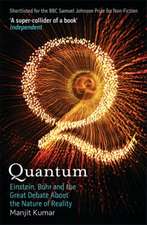The Scientific Revolution and the Foundations of Modern Science: Greenwood Guides to Historic Events 1500-1900
Autor Wilbur Applebaumen Limba Engleză Hardback – 29 apr 2005 – vârsta până la 17 ani
Din seria Greenwood Guides to Historic Events 1500-1900
- 42%
 Preț: 245.13 lei
Preț: 245.13 lei - 42%
 Preț: 248.24 lei
Preț: 248.24 lei - 42%
 Preț: 225.90 lei
Preț: 225.90 lei - 43%
 Preț: 168.53 lei
Preț: 168.53 lei - 42%
 Preț: 218.11 lei
Preț: 218.11 lei - 42%
 Preț: 227.73 lei
Preț: 227.73 lei - 42%
 Preț: 218.59 lei
Preț: 218.59 lei - 42%
 Preț: 223.48 lei
Preț: 223.48 lei - 42%
 Preț: 203.72 lei
Preț: 203.72 lei - 42%
 Preț: 202.58 lei
Preț: 202.58 lei - 42%
 Preț: 246.65 lei
Preț: 246.65 lei - 42%
 Preț: 226.57 lei
Preț: 226.57 lei - 42%
 Preț: 223.48 lei
Preț: 223.48 lei - 42%
 Preț: 216.41 lei
Preț: 216.41 lei - 42%
 Preț: 236.29 lei
Preț: 236.29 lei - 42%
 Preț: 236.47 lei
Preț: 236.47 lei - 48%
 Preț: 247.38 lei
Preț: 247.38 lei - 42%
 Preț: 218.40 lei
Preț: 218.40 lei - 41%
 Preț: 204.84 lei
Preț: 204.84 lei - 42%
 Preț: 319.67 lei
Preț: 319.67 lei - 51%
 Preț: 203.90 lei
Preț: 203.90 lei - 48%
 Preț: 237.23 lei
Preț: 237.23 lei
Preț: 204.57 lei
Preț vechi: 349.98 lei
-42% Nou
Puncte Express: 307
Preț estimativ în valută:
39.14€ • 40.79$ • 32.41£
39.14€ • 40.79$ • 32.41£
Carte tipărită la comandă
Livrare economică 03-17 aprilie
Preluare comenzi: 021 569.72.76
Specificații
ISBN-13: 9780313323140
ISBN-10: 0313323143
Pagini: 268
Dimensiuni: 156 x 235 x 24 mm
Greutate: 0.53 kg
Ediția:New.
Editura: Bloomsbury Publishing
Colecția Greenwood
Seria Greenwood Guides to Historic Events 1500-1900
Locul publicării:New York, United States
ISBN-10: 0313323143
Pagini: 268
Dimensiuni: 156 x 235 x 24 mm
Greutate: 0.53 kg
Ediția:New.
Editura: Bloomsbury Publishing
Colecția Greenwood
Seria Greenwood Guides to Historic Events 1500-1900
Locul publicării:New York, United States
Notă biografică
Wilbur Applebaum is Professor Emeritus, Department of Humanities, Illinois Institute of Technology, where he taught history of science for many years. He has published on various aspects of the Scientific Revolution and on astronomy in the 17th century. He is the editor of the Encyclopedia of the Scientific Revolution (2000).
Cuprins
DedicationSeries ForewordIntroductionChronologyHistorical OverviewAstronomy and the CosmosMatter, Motion, and the CosmosThe Nature of Living ThingsNew Methods for the Advancement of KnowledgeReligion and Natural PhilosophyInfluence of the Scientific RevolutionBiographiesPrimary DocumentsGlossaryAnnotated Bibliography
Recenzii
Applebaum offers beginning university students the perfect introduction to the age of the scientific revolution from 1500 to 1800. Many scientific ideas and much medical information improved dramatically during those times as investigators began a relentless drive, which continues today, toward a better understanding of the natural world..One learns about the ideas of Copernicus, Galileo, Kepler, Bacon, Descartes, Harvey, Newton, and many others. Annotated primary documents provide the flavor of the old writing styles and concepts. The numerous diagrams, individual portraits, glossary, annotated bibliography, and the index complete this overview for the young researcher. Highly recommended. General readers; lower-division undergraduates; two-year technical program students.
Applebaum introduces high-school and lower-undergraduate students to the developments in science from about 1500 to about 1700 in Europe, changes dubbed the Scientific Revolution in the middle of the 19th century. Among the areas he surveys are astronomy and the cosmos, the nature of living things, new methods for advancing knowledge, and religion and national philosophy.
If you enjoy reading the history of science or need additional background in understanding the historical perspective of science, you should add this book to your collection. The reader-friendly format provides information that teachers at all levels will appreciate. It is rich with opulent stories of both skepticism and openness, underscoring the evolution of ideas that led us to scientific reasoning and discovery.^LIt should become an imperative to weave the logical arguments and skepticism of the history of science into our curriculum. By gaining an appreciation of the history of science, we open the door to greater awareness of scientific inquiry and perseverance. Reading The Scientific Revolution and the Foundations of Modern Science is an excellent way to begin.
[A] recommended pick for both high school and college-level library holdings, reviewing connections between science and philosophy from 1500 to 1700, a period which created the foundations for the modern science we know today.
Applebaum introduces high-school and lower-undergraduate students to the developments in science from about 1500 to about 1700 in Europe, changes dubbed the Scientific Revolution in the middle of the 19th century. Among the areas he surveys are astronomy and the cosmos, the nature of living things, new methods for advancing knowledge, and religion and national philosophy.
If you enjoy reading the history of science or need additional background in understanding the historical perspective of science, you should add this book to your collection. The reader-friendly format provides information that teachers at all levels will appreciate. It is rich with opulent stories of both skepticism and openness, underscoring the evolution of ideas that led us to scientific reasoning and discovery.^LIt should become an imperative to weave the logical arguments and skepticism of the history of science into our curriculum. By gaining an appreciation of the history of science, we open the door to greater awareness of scientific inquiry and perseverance. Reading The Scientific Revolution and the Foundations of Modern Science is an excellent way to begin.
[A] recommended pick for both high school and college-level library holdings, reviewing connections between science and philosophy from 1500 to 1700, a period which created the foundations for the modern science we know today.














